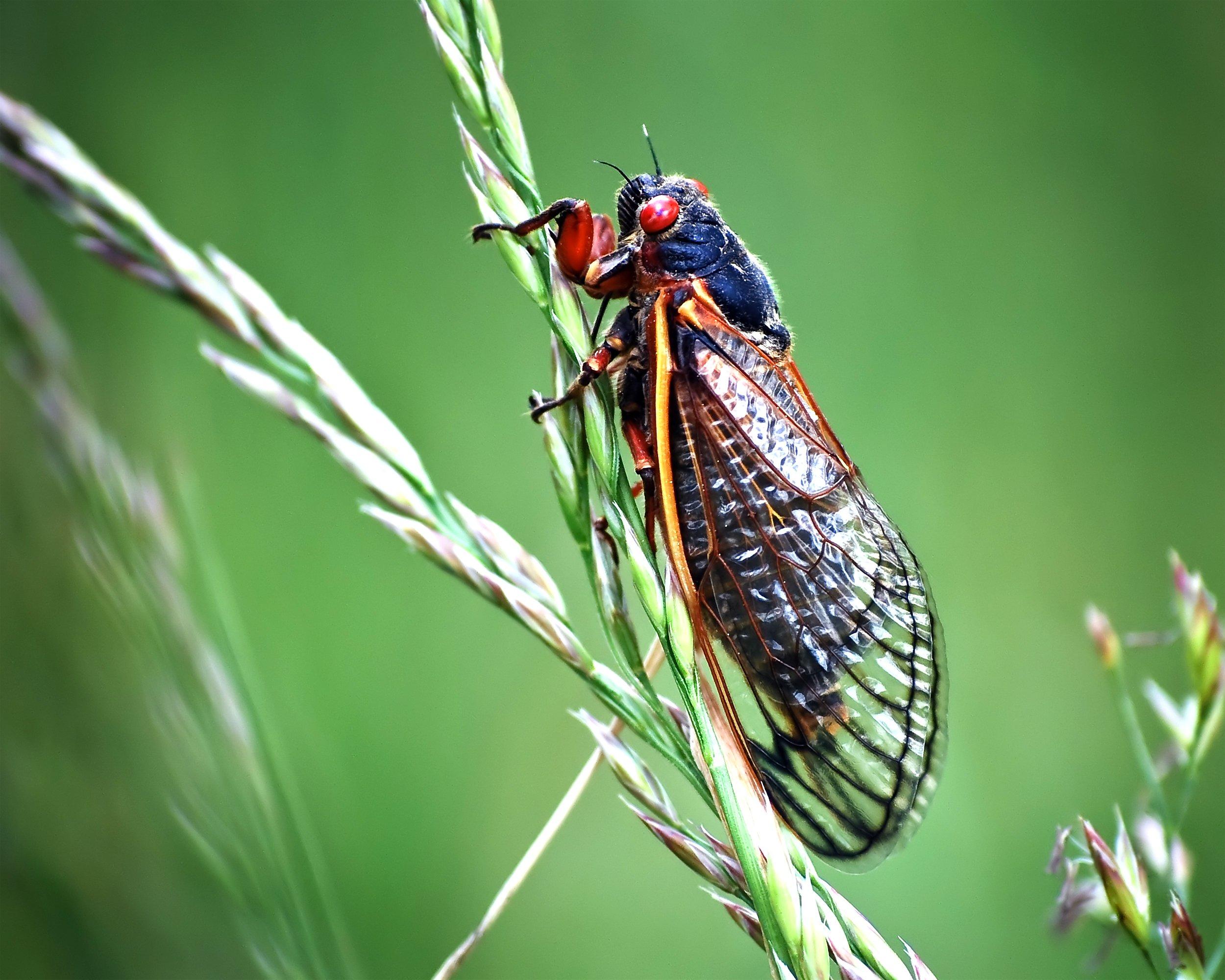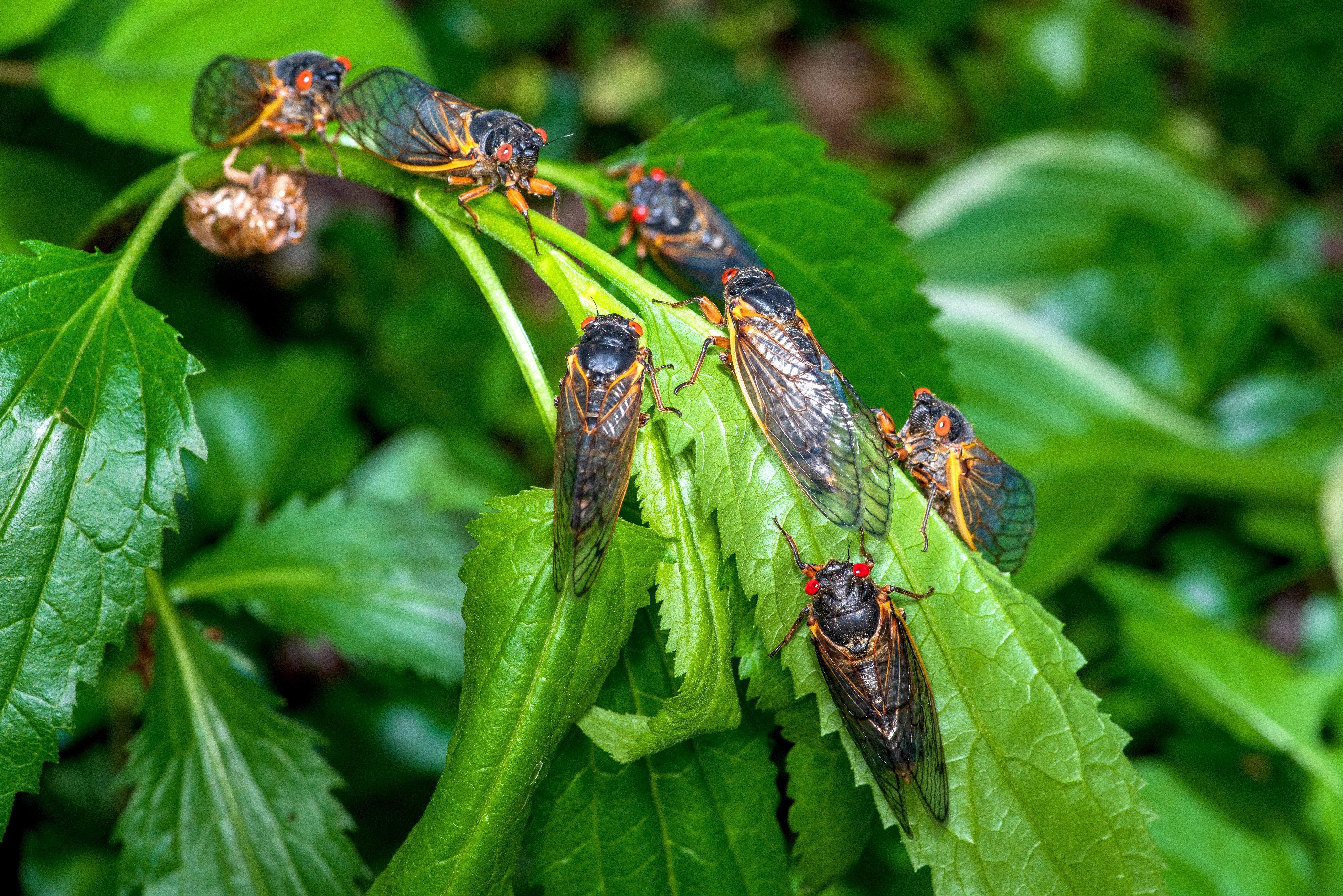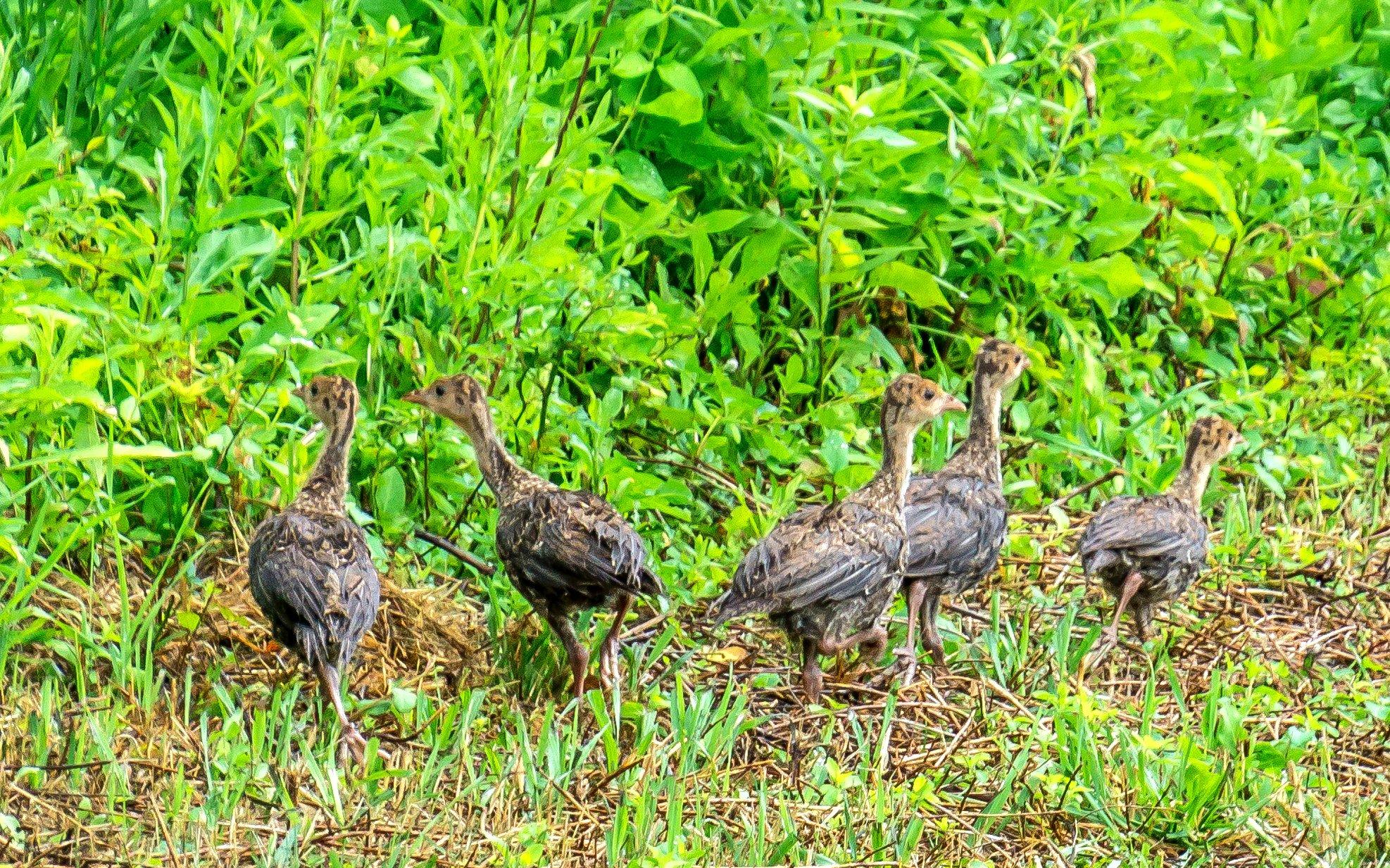Billions of cicadas will be emerging from the ground later this spring. It’ll be loud and messy, and turkey poults will love it
For many, the loud hum of hundreds, thousands or even millions of cicadas is the soundtrack to their summer. For others, that cacophonous racket during a five- to six-week span is just about enough to drive a person insane. For turkey hunters, that sound should be music to their ears.
This summer should see a rare double hatch of cicadas. Image by Dave Allen Photography
Cicadas are a strange lot. Their life cycle passes in stages. Mating occurs, females lay eggs in trees, and the nymphs hatch and fall to the ground and burrow down around 6 inches, where they stay for a period, feeding on the sap from tree roots. Then they emerge, molt into mature cicadas and repeat the process. Some of the 3,000 or so known species have a life cycle that might span only a year or two. These, known as annual cicadas, are the insects that hatch periodically throughout every summer, humming us a quiet backdrop to outdoor activities and singing us to sleep in the warm late evenings. That sound they make comes from males seeking to attract a mate. According to a team of U.S. Naval researchers, “The insects manage to produce their incredibly large sound because they have a unique anatomy that combines a ribbed membrane on the torso that vibrates when they deform their bodies.”
Cicada nymphs live underground, and then emerge, molt, and make noise. Image by fotohunter
Then there are periodical cicadas. These exist much longer below ground — 13 or 17 years — before emerging by the billions. Those are the years that will drive even the most ardent outdoors people back inside in search of earplugs and air conditioning. Those broods, in their massive numbers, can reach noise levels as high as 100 decibels. That is equivalent to the sound of a lawnmower, dirt bike, or tractor, according to the U.S. Department of Health and Human Services.
***Don’t Miss: *YOUR ALL-SEASON GUIDE TO USING TURKEY DECOYS
This year, something special is going to happen. Those 13- and 17-year cycles will coincide. According to University of Kentucky entomologist Dr. Jonathon Larson, that hasn’t happened in the United States since Thomas Jefferson was president. That’s about 221 years ago, in case you went fishing that day in history class. (Cicadas make pretty good fishing bait, by the way. Use a light wire hook through the back of the thorax to allow the bug to move around on the water surface for some explosive topwater action.)
Although the viral online maps that show both of those broods hatching throughout the same areas are blown a little out of proportion, there will be some overlap. According to Larson, parts of Illinois should see the emergence of both broods this year. That doesn’t mean the rest of us will miss out, though. “Both Brood 13, known as the Northern Illinois Brood, and Brood 19, known as the Great Southern Brood, will emerge this summer, covering a lot of states between them,” Larson said. Hatch zones should range from northern Illinois through western Kentucky, and then cover parts of Oklahoma, Texas, Mississippi, Alabama, Georgia and the Carolinas. Both broods will have large hatch numbers. According to one University of Connecticut study, densities could reach 1 million cicadas per acre in some areas. Extrapolate that over the size of the covered area, and you start to realize just how big a deal this is.
In some areas, cicada numbers might reach 1 million per acre this summer. Image by Jamie Noguchi
So interesting bug talk and impending summer noise pollution aside, what does this mean for the average turkey hunter? According to Larson, “Turkeys love these cicadas; they gorge on them.” Because cicada hatches begin when the soil temperature 6 inches deep reaches 64 degrees, that means all those tasty, protein-packed morsels will emerge about the same time that newly hatched turkey poults are venturing out of the nest in search of their first foods.
Dr. Patrick Wightman, a research scientist at the University of Georgia Warnell School of Forestry and Natural Resources, said, “Cicada hatches have been shown to increase turkey reproductive success and recruitment. In the past, states such as Kentucky and Indiana have observed significant increases in poult-per-hen ratios statewide in years with a good cicada hatch. Which was followed by increases in spring harvest the following year. Having higher-than-normal cicada hatches certainly could help overall turkey numbers if it results in consecutive years with higher recruitment. However, it is important to note that there are other factors known to influence turkey reproductive success, such as habitat, weather, and predation to name a few.
***Don’t Miss: *THE 6 BEST SLEEPER STATES FOR TURKEY HUNTING
“Cicada hatches occur at about the same time as turkey hatches, meaning they create an increase in food availability for young poults. Cicadas are a good source of protein for poults, which is extremely important for poult development — particularly the growth of flight feathers so poults can get off the ground to help escape predation. The increase in food availability might also benefit turkeys because some predators also eat cicadas, which means they might be less likely to search for and prey upon turkey nests and young poults.”
Not that they are turkey predators, but interestingly, Larson noted that copperhead snakes seem to be particularly fond of the insects.
Cicada hatches coincide with the hatching of turkey poults and provide young birds with an easy-to-find protein source. Image by Circle’n’Light
That ready food source translates directly to more birds. And that can mean increased harvest numbers for hunters. According to Zak Danks, program coordinator at Kentucky Department of Fish and Wildlife Resources, “Kentucky had a strong cicada hatch in 2008, and that led to our record harvest in 2010 of over 36,000 birds taken by hunters that season.”
So heavy hatches of cicadas definitely benefit spring poult numbers, but does it translate into more adults surviving winter? Wightman said probably not, but it doesn’t hurt. “In terms of adult survival, we see high survival during the winter regardless, especially in the Southeast,” he said. “Almost all adult hen mortality occurs during reproduction, not due to weather conditions. However, I am sure that it will help their body condition going into winter and would likely result in better body condition coming out of winter, which could influence reproduction. Anyway, having that amount of protein on the ground can only help. The magnitude of help is probably dictated by a lot of other variables that influence these amazing and complex birds.”
So this summer, when the cicada screams push you to the breaking point, just smile and think of all those extra young toms that will be gobbling their heads off a couple of springs from now. Then put your earplugs in and go back inside until it’s finished.




